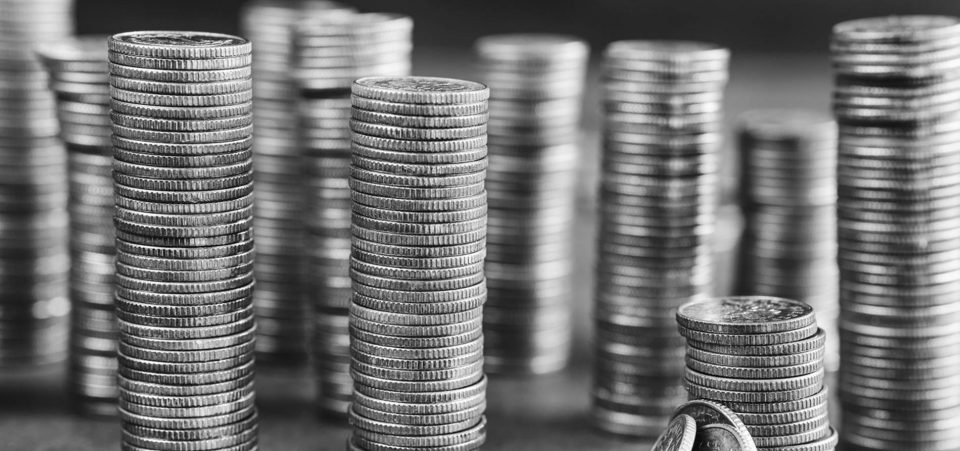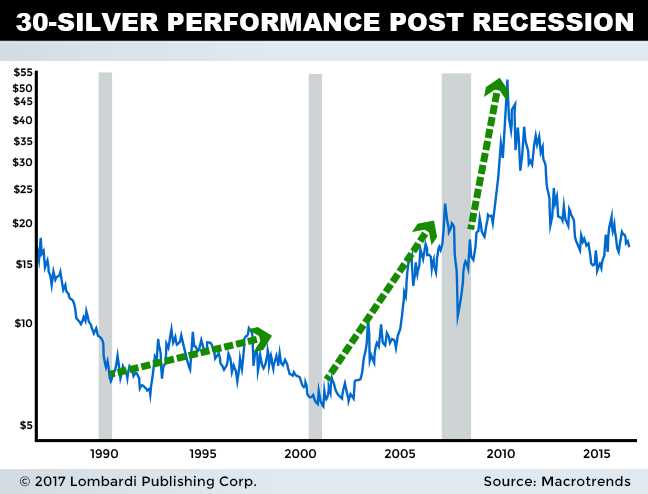Silver Investing 2018 Promises to Be Genesis of a Glorious Run; Here’s Why
It must be tough being a silver bull. In the last three years, silver has been stuck between $14.00-$21.00/oz, trapped in a range, whereas stocks have broken out. It’s been the quintessential “dead money” trade by all accounts. Undoubtedly, even die-hard precious metal investors have contemplated throwing in the towel. But optimism is on the horizon (no, seriously). Silver investing 2018 may not yield immediate results, but it will be the time to accumulate for the spectacular results which should follow thereafter.
Also Read:
Precious Metal Analysis: Keep Gold and Silver on Your Radar in 2017
The focus of this piece is not to rehash what you already know. Silver investors already know that supply will be in deficit for the first time in 12 years. Silver investors already know COMEX inventories are at their lowest levels ever. Silver investors already know prices can’t deteriorate too much further before miners start paring back supply, crimping stocks even further. All of these factors are indeed bullish, but they’ve also failed to carry price momentum higher. These are helpful supporting factors, but not difference makers.
The key to silver price 2018 and beyond is what lies ahead. What is that killer catalyst that can drive prices through the $21.00/oz ceiling once and for all? In my estimation, it will be when the market value reflects both silver’s precious metal and industrial growth properties. When will that happen? Right as the U.S. (and the world economy) emerges from recession.
The reason for this is twofold. First, industrial demand would have hit a low point. There’s only one way for demand to move once the cyclical growth bottom is in place. And rising industrial demand will be a multiyear trend. Demand for solar panels and other silver-intensive technologies will only continue to expand as time wears on. When deflated commodity prices meet continuous rising demand, good things tend to happen.
Second, the expected credit boom hangover, which will be exposed by the next recession, will be intense. In fact, it will probably be historic. Stock markets will crater and investors will look to precious metals to shield their wealth. The Federal Reserve will likely introduce immense (record-breaking) stimulus programs to try and stabilize the economy. When the coming chaos and financial debasement hits, silver will be appreciated once again for its precious metal qualities.
Even after the recession is over, historically, precious metals have been fantastic investments in the years following recession. This is when financial uncertainty and monetary debasement through stimulus is still high, yet industrial demand increases rapidly. This has been the pattern over the past three recessions, and will likely happen again next time around.
Notice how silver price gains have increased with each passing recession. This could be in reaction to the increasing levels of monetary stimulus needed to quell the crisis. In other words, silver’s precious metal qualities act as rocket fuel to propel prices higher. As each subsequent business cycle credit boom expands significantly, silver prices have reacted in kind.
This current credit boom hangover is no different. Easy fiscal policy is bigger than ever, so if our thesis is correct, expect silver to reach new nominal highs… eventually.
As the great Yankee Yogi Berra once said, “You don’t have to swing hard to hit a home run. If you got the timing, it’ll go.” We believe the exact same thing applies to silver investing 2018.
Will Silver Be a Good Investment in 2018?
The silver price forecast 2018 isn’t necessarily glowing. I think of 2018 as more of a transition phase, where shifting money into a bottoming sector is warranted. The time to enter is when prices hollow out during the coming recession; the results show up later. Without question, patience is required for this trade to work.
Silver price predictions are going to ultimately depend on the timing of the next recession. As long as the economy limps along at stall-speed growth, I don’t expect much to happen. Why? Because this is the zone industrial demand remains tepid, and demand for the “insurance” precious metals provide remains low. Let’s be honest. With stock markets engaged in a multiyear winning streak (including high-quality dividend stocks, which provide capital gains and yields), what compelling reason is there to own silver?
But all of that is set to change. When the proper conditions align, silver investing could be among the best performing assets around. We’re talking potential to make 10-times your money within two to five years’ time. The returns could easily exceed equity returns—including NASDAQ—gained from the Housing Bubble beginning to present.
If you’re buying into our thesis, executing on timing is of paramount importance. Sure, you could buy silver right here ($16.50/oz as of this writing), and it wouldn’t be a bad price. Looking at silver future prices prediction in the future, we expect it to soar to new highs. But buying it too early means sitting on dead money and potential near-/intermediate-term losses of 25% or so.
No investor likes being underwater, even when they know they’ll come out ahead longer term. Not to mention the fact that buying silver at $12.00/oz means you can own that much more supply. That isn’t necessarily a prediction that silver will head that low, but the drift potential is there. Again, without the lack of near-term catalysts, investors aren’t exactly bidding prices higher.
In my estimation, the best time for silver investing is right in the middle of a recession, when prices are traditionally their lowest. I expect the next recession to occur sometime in 2018. The best window to accumulate will occur then. If the current business cycle expansion lasts that long, it will have been the second-longest on record. It’s getting quite long in the tooth, and signs of credit slowdown are everywhere.
For example, the Federal Reserve published a report in May 2017 discussing several observed trends within the banking industry. The results were derived from surveys with senior loan officers. They covered big ticket items like auto, credit card, commercial and industrial (C&I), and commercial real estate. Among the three overarching trends were as follows:
- Loan demand is slowing
- Banks are unable to increase the spread of loan rates over cost of funds (consumer price sensitivity)
- Credit standards are tightening for auto, commercial real estate, and multifamily lending
(Source: “Drop In Bank Loans Should Worry All Investors As Well As The Fed,” Seeking Alpha, May 11, 2017.)
Folks, this is happening at the supposed peak of the business cycle. If demand is struggling here and now, it won’t take much before the economy rolls over. This is one of many signs that are signaling under the hood.
Several major economists also think recession is fairly imminent. For example, Saxo Bank Chief Economist Steen Jakobsen believes there’s a 60% chance global recession will occur within 12-18 months based on a peaking global credit impulse and inflation. (Source: “There’s more than 60% chance of a global recession within the next 18 months, economist says,” CNBC, April 10, 2017.)
We tend to agree. When credit growth slows down, so does the economy. It’s a very simple equation. Debt spending drives consumption in an indebted world, plain and simple. When it inevitably stalls, like it must, recession will arrive.
How to Invest in Silver
The best way to invest in silver and position yourself for the recession depends on your viewpoint. Traditionalists tend to gravitate towards owning physical metal in their possession. Some feel that’s the best way to guarantee ownership, without being subject to potential rehypothecation (the practice whereby banks post client assets as collateral). Former clients of commodity brokerage firm MF Global know exactly what this means. It’s certainly an under-the-radar risk worth considering. Should a cross-asset panic collapse happen again, investors may wish they had more than digital ownership rights.
Investors who are unconcerned about digital silver ownership have a plethora of options. Several silver ETFs are available that vault physical silver in their possession. ETF ownership is akin to holding a set percentage of the silver in custody. Other, like PureFunds ISE Junior Silver ETF (ARCA:SILJ) have set allocations of junior miners (producing and non-producing) under management. Still other ETFs allow for easy redemption of physical silver on-demand. There are a lot of options available.
Whatever investment vehicles you choose to purchase, the coming silver bull market will raise all boats. Junior and mid-level junior mining companies might see the biggest returns, as they are the most leveraged to spot prices. But a well-rounded portfolio that includes physical holdings (ETF or in-possession), large producers, and junior miner stocks is always a good call. It offers a great way to capture all-encompassing silver investing gains, while allowing for upside capital appreciation of risky junior miners stocks. Some of the larger miners also pay dividends as well.
Ultimately, I believe better days for silver investing are coming. But a little more patience is required. The proper conditions must align for silver to unlock its true price potential. That can only occur when breakout industrial demand collides with the precious metals safety silver provides. Those conditions can only be present at the end of a recession—particularly one where a historic credit bubble will be unwound or monetarily debased.
In other words, silver investing 2018 will be the beginning of the beginning.







